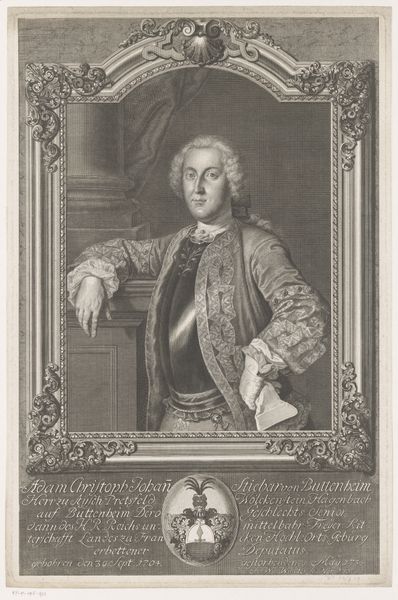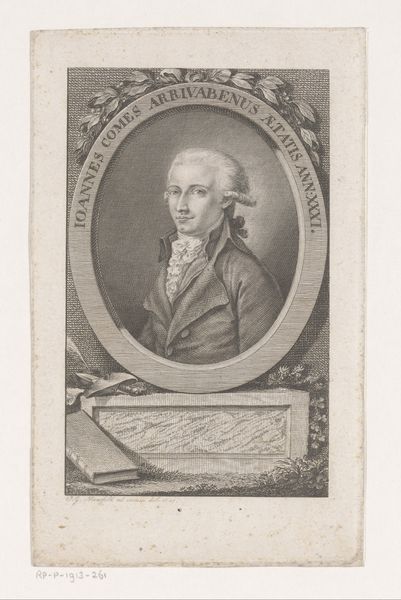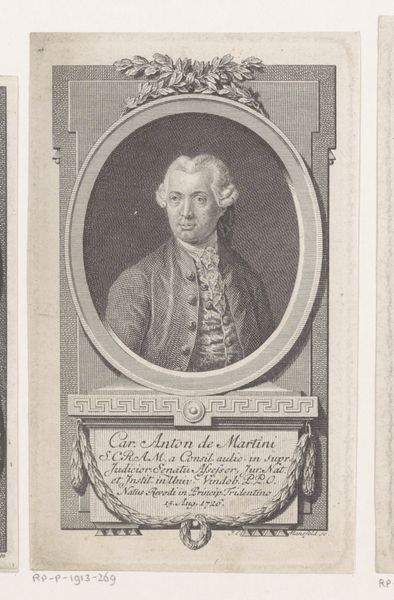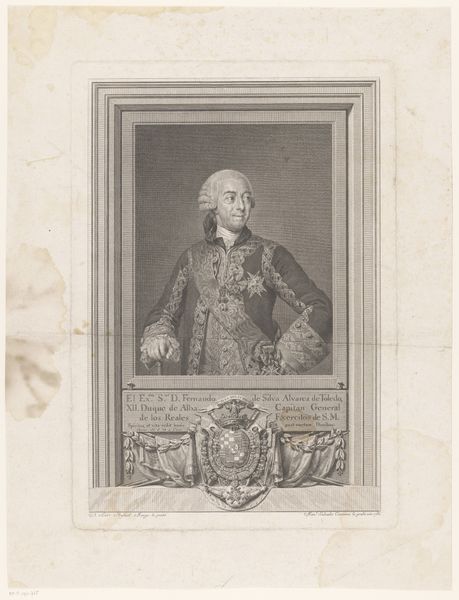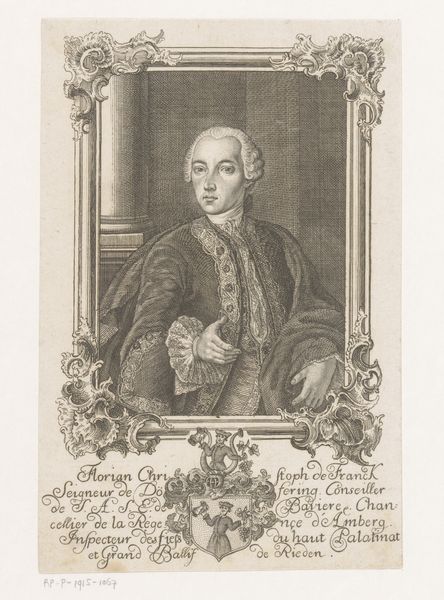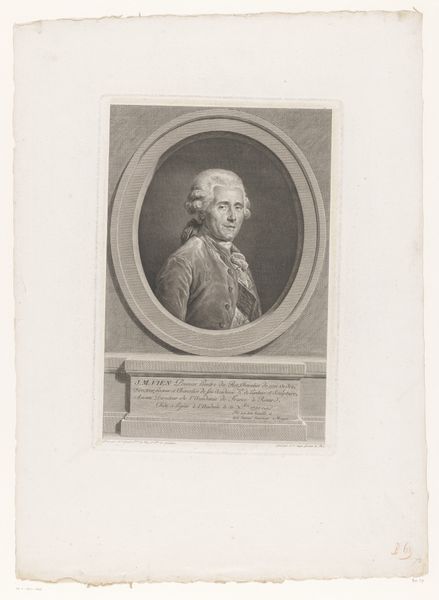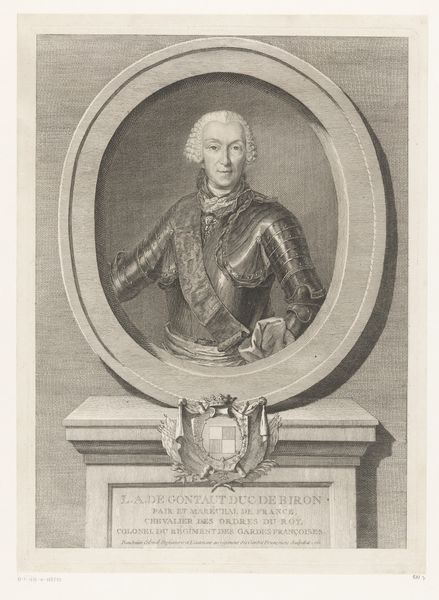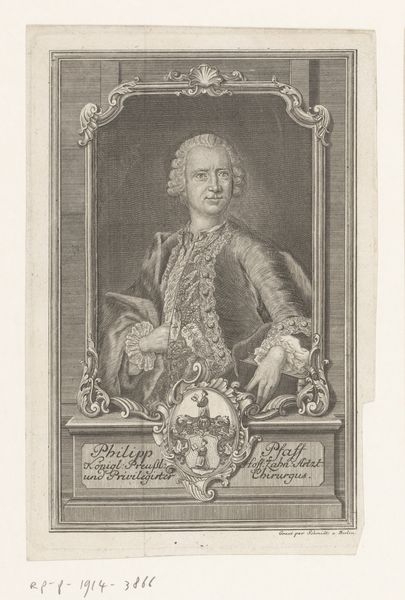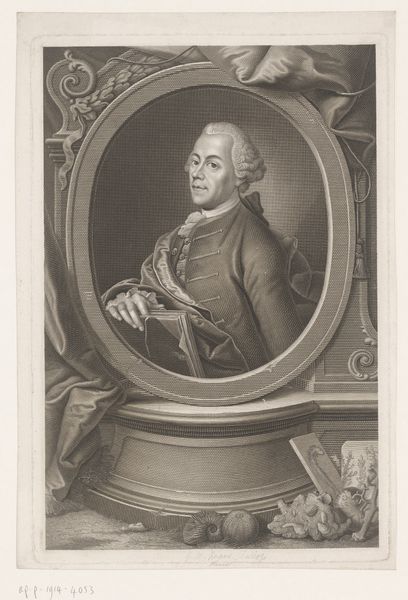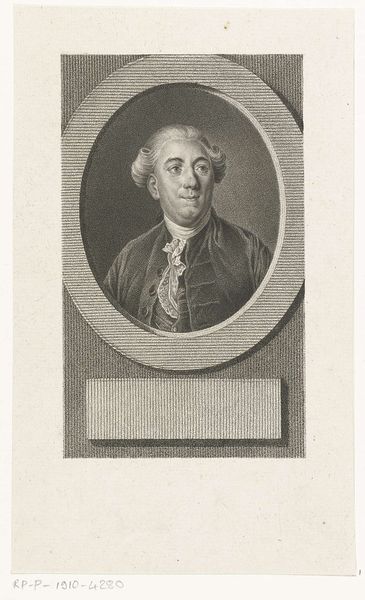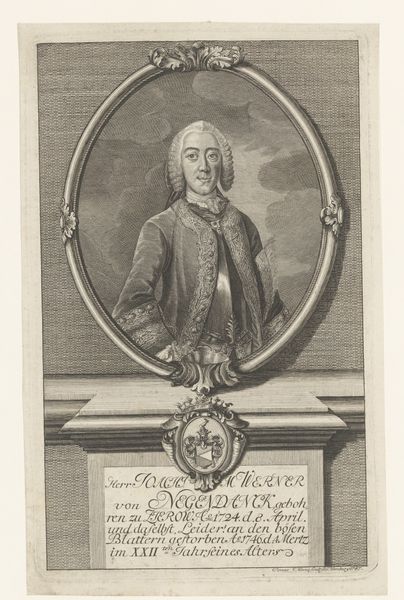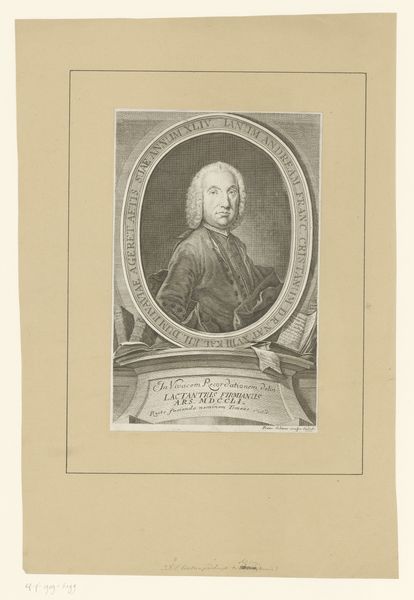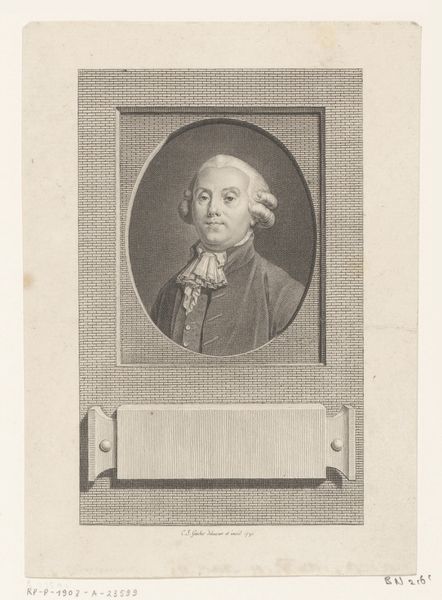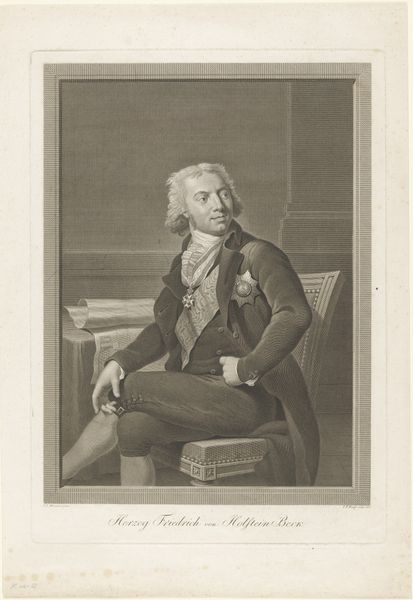
print, engraving
#
portrait
#
neoclacissism
# print
#
old engraving style
#
19th century
#
history-painting
#
academic-art
#
engraving
Dimensions: height 407 mm, width 278 mm
Copyright: Rijks Museum: Open Domain
Curator: This portrait by Manuel Salvador Carmona, created in 1797, depicts Joseph Alvarez de Toledo, the Duke of Alva. It is crafted as an engraving, characteristic of the Neoclassical art movement. Editor: It’s austere. I immediately sense formality and hierarchy, perhaps even a distance between the sitter and the viewer. It's all very… controlled. Curator: Control is an interesting observation. How does that tie into the sociopolitical landscape of late 18th-century Europe, particularly regarding power and representation? I mean, consider the French Revolution was underway! Editor: The very nature of portraiture during this time inherently involved control. To have one’s likeness rendered was a privilege, a demonstration of status. The Duke's composed posture and detailed coat of arms absolutely reinforce notions of hereditary power and societal stratification. Do you think this artwork serves to emphasize his personal accomplishments as an individual or to stress that legacy and birth define him? Curator: His awards could represent a certain personal valor, perhaps. However, I think this work attempts to place the Duke into a longer narrative of lineage. Note the trappings of nobility: this is about dynastic power, and perpetuation through a certain socio-political lens. Is this piece a historical record, or does it also function as an exercise in idealizing power, silencing other narratives, shall we say, of commoners in late 1700s Spain? Editor: A powerful question to consider in examining not just who is represented in art, but who art serves. This isn't merely a snapshot; it is strategic messaging aimed toward audiences that likely included the Duke’s peers and subjects, influencing perceptions about his authority and legitimacy within the historical setting of declining monarchies across Europe. Curator: Precisely. And when viewing portraits like these, understanding whose stories are excluded becomes essential in gaining critical insight into the politics surrounding imagery. This dialogue surrounding historical art makes for compelling modern interpretations. Editor: Absolutely, analyzing art through a lens that acknowledges power, class, and societal structures provides a crucial deeper meaning in this kind of image.
Comments
No comments
Be the first to comment and join the conversation on the ultimate creative platform.
